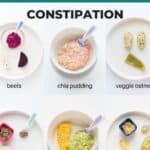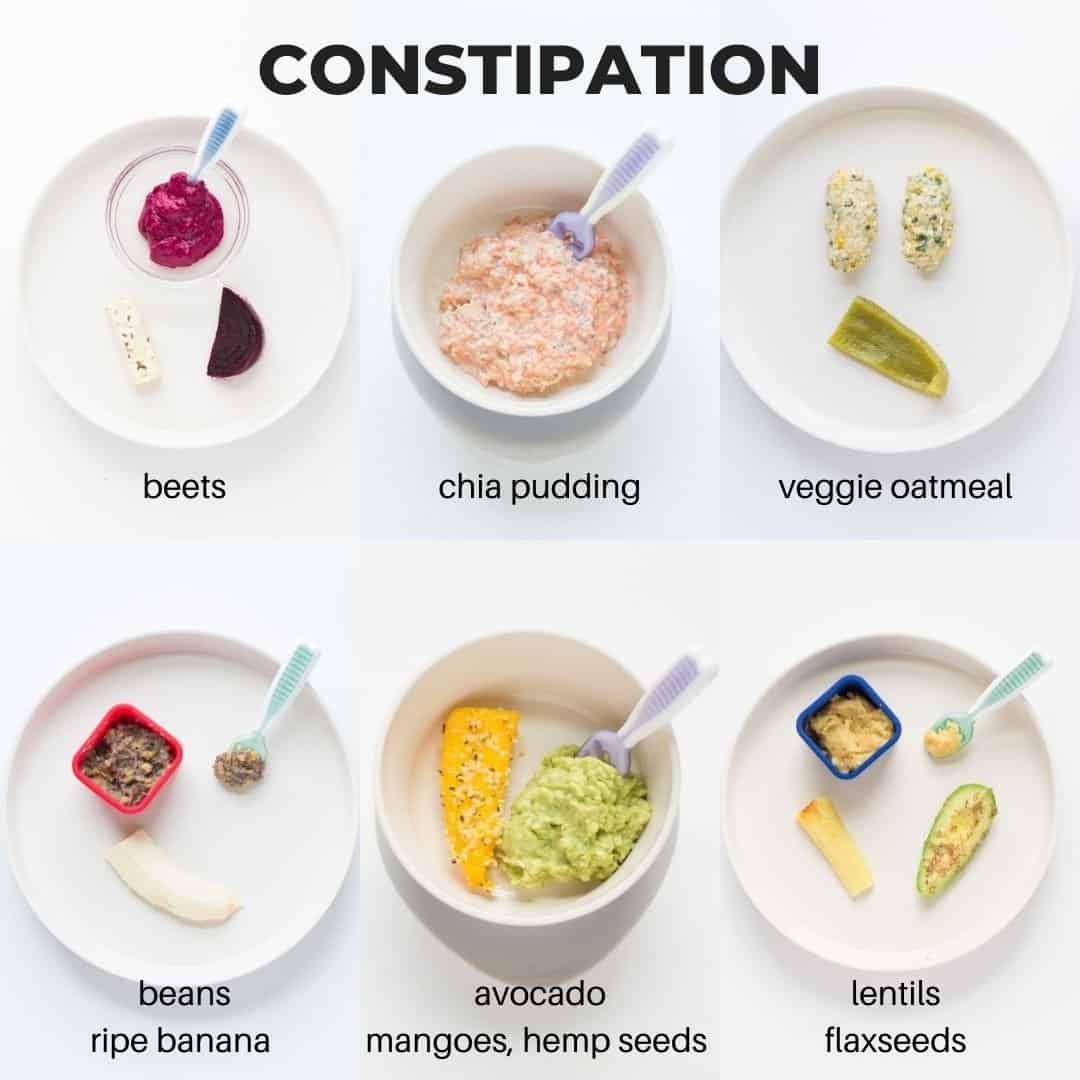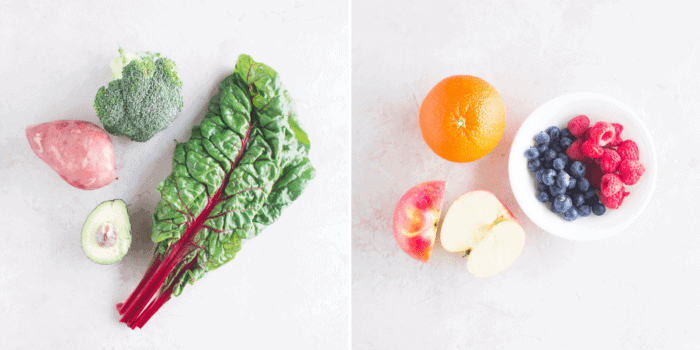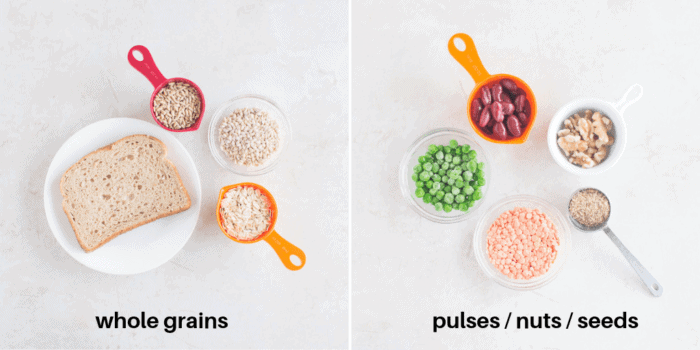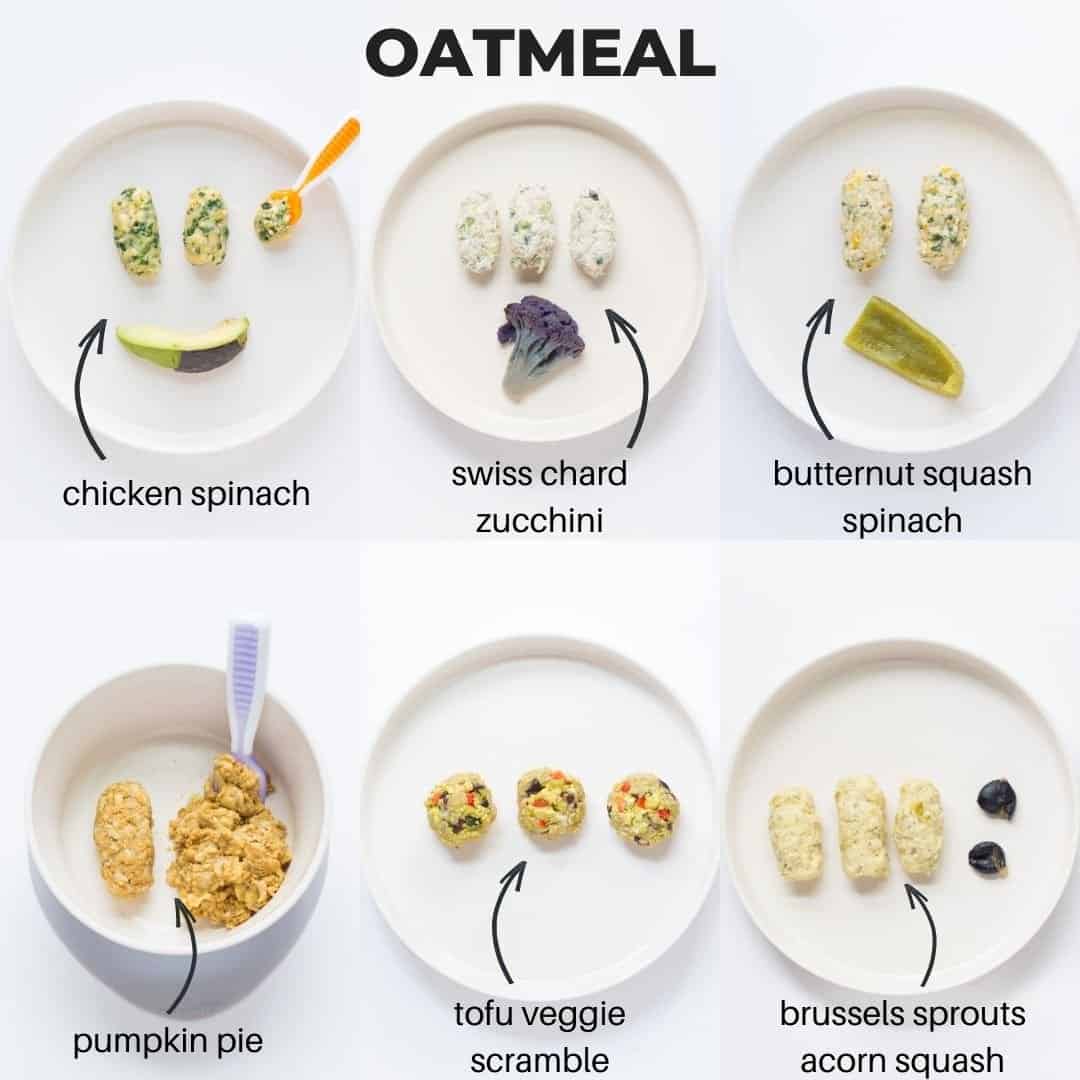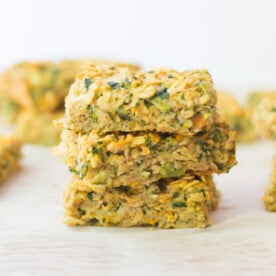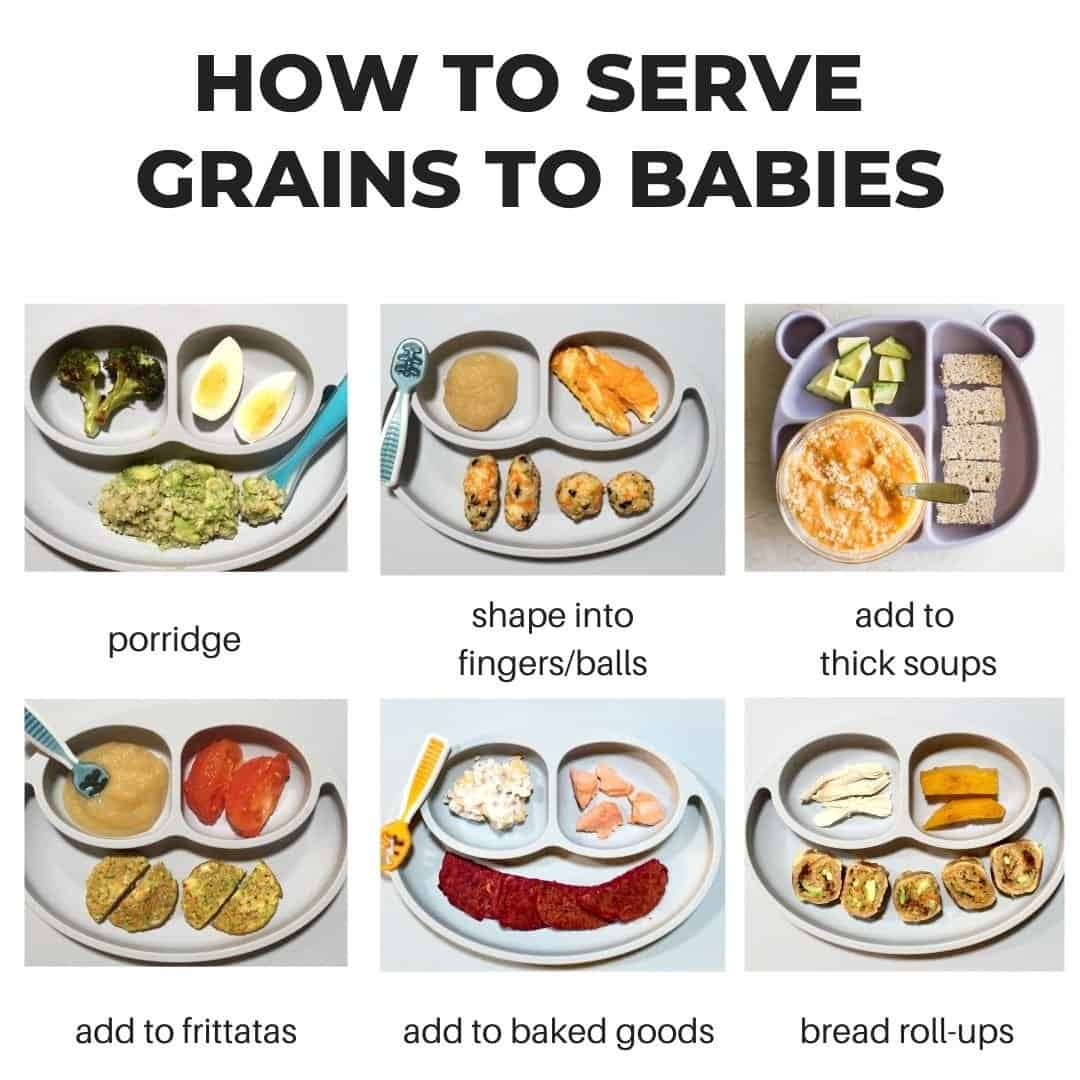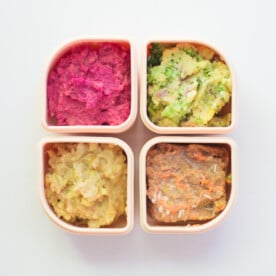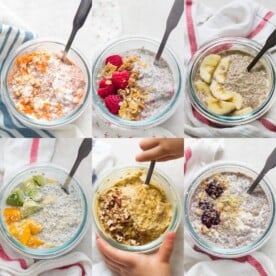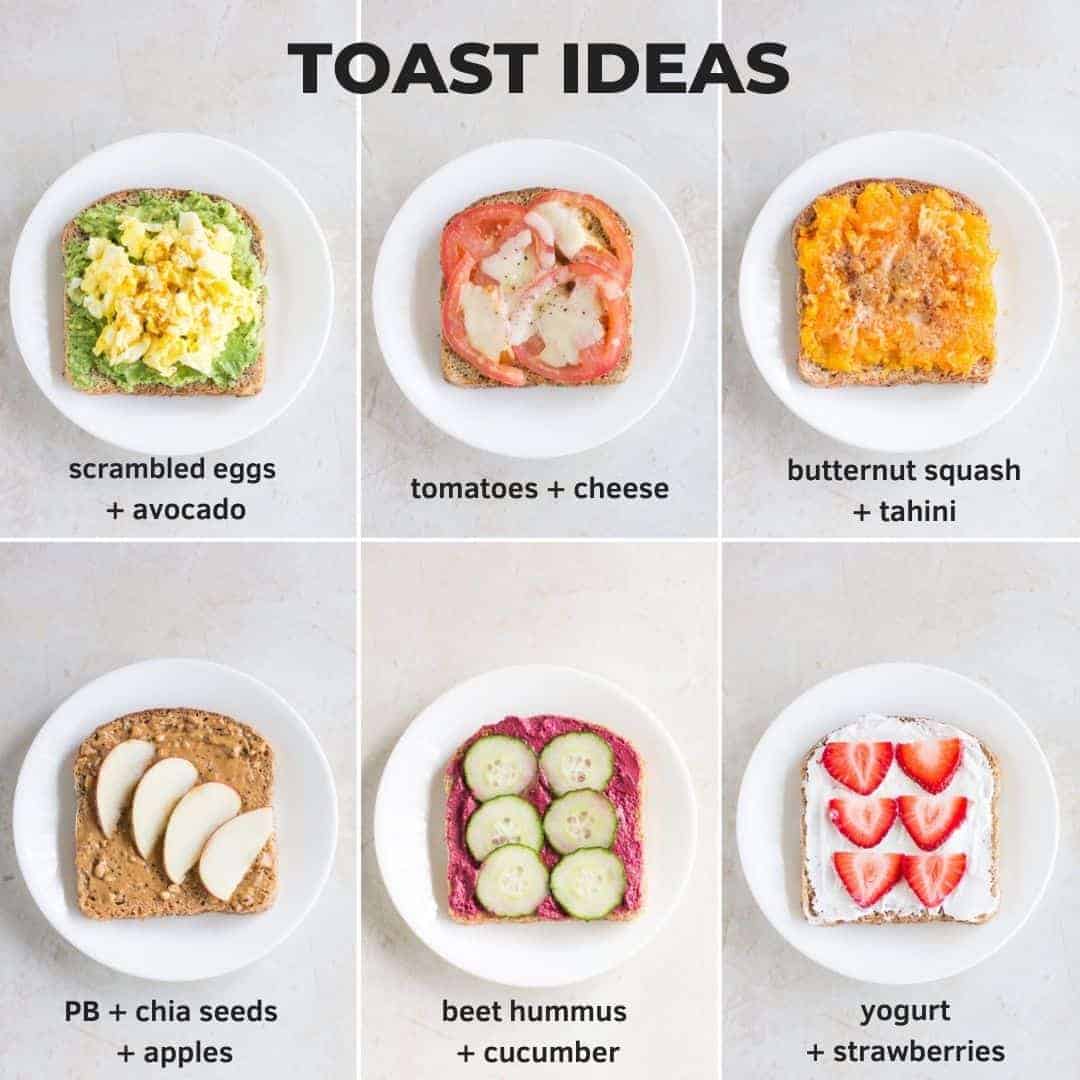Health Benefits of Fiber
We know that eating more fiber is good for us. But why? I don’t know about you, but for the longest time I associated fiber with helping go to the bathroom. It is so important in helping with infant constipation as well as toddler constipation. But dietary fiber offers so many additional benefits, like helping to protect against many diseases, including type 2 diabetes , cardiovascular disease, obesity, and colon cancer. And if we go even deeper, we now know that consuming a fiber-rich diet helps encourage healthy gut microbiota (oftentimes referred to as the “forgotten organ”). It’s basically a fancy word for the trillions of microorganisms that live in our digestive tracts, and dietary fiber helps these guys to thrive and flourish. A healthy gut leads to stronger immunity as the beneficial microbes will help fight harmful pathogens and will aid in optimal digestion and absorption of nutrients from food.
What is Dietary fiber?
It is a part of whole plant foods that your body can’t break down. And rather than being broken down and absorbed into the bloodstream, fiber passes through the entire digestive tract relatively unchanged. Here are the two types:
Soluble Fiber
This type of fiber dissolves in water and turns into this thick gel-like substance in your intestines. It SLOWS DOWN digestive transit time, which helps:
Best Food Sources
Fruits (particularly apples, pears, citrus, stone and berry fruit) Vegetables (broccoli, Brussels sprouts, potato, carrots) Beans Peas Barley Lentils Oat bran Nuts and seeds
Insoluble Fiber
Think of this type of fiber as a sponge. Instead of dissolving in water, it absorbs water and swells as it pass through the digestive system, which helps soften and bulk up stools. It also helps SPEED UP the movement of food and waste. All this to say, it’s helpful in relieving constipation.
Best Food Sources
Insoluble fiber is concentrated in the protective outer layers of whole grains, stalks, seeds, and skins of fruits and vegetables.
Whole grains (like oatmeal, quinoa) Wheat bran Fruits (with peel on) – a quick note about banana. While unripe banana is NOT recommended if constipated, ripe bananas can provide relief! Vegetables (particularly leafy greens) Nuts and seeds Beans, peas, lentils
As you can see most foods contain both types of fiber, but in different proportions. You need BOTH for optimal health.
Fiber Recommendations
There are no specifics for babies – focus on offering a wide variety of foods Children 1-3 years: 19 grams/day Children 4-8 years: 25 grams/day Moms and dads (including here to encourage you to enjoy fiber-rich foods with your child!): 25 grams/day for women, 38 grams/day for men
A general idea of the amount of fiber found in foods:
Grains (1/2 cup cooked): 2-4 grams Beans and lentils (1/2 cup cooked): 6-9.5 grams Whole grain pasta (1/2 cup cooked): 2-4 grams A slice of whole grain bread: 2-4 grams Vegetables (1/2 cup cooked): 2-4 grams Best sources: carrots, beets, broccoli, butternut squash, and green leafy vegetables Fruits (1 medium): 2-4 grams. These two are particularly high! Berries (1 cup): 6-8 grams Pear (1 medium): 6 grams Avocado (1 small): 9 grams Nuts (1/4 cup): 2-3 grams Seeds (1 tablespoon ground): 2-4 grams
Tips to incorporate more fiber
Add fiber slowly as too much fiber at once may cause digestive discomfort. Be sure to offer plenty of water (for babies, continue offering breastmilk/formula, which will provide all the fluids they need. It is ok to offer a little water but no more than 2 ounces per day). Serve vegetables and/or fruit with every snack and meal. Eat more pulses (beans, lentils, peas). They can easily be added to your meals. Also try pasta made from these ingredients. Thankfully, there are so many options now, like Banza. Eat raw fruits and vegetables (with the skins), not juice, which doesn’t contain any fiber. Enjoy a wide variety of whole foods. When purchasing processed foods, check: the ingredient list – make sure the whole grain is the first or second ingredient on the list. the nutrition label – choose ones with at least 3 grams of dietary fiber and isn’t loaded with sugar.
Fiber-rich meal ideas for Babies and Toddlers
Refer to the list above for the top fiber-rich foods. I am going a step further and providing you with easy meal ideas that incorporate these foods.
Yogurt
It’s such a great vehicle for all kinds of toppings, both sweet and savory! Add fruits, vegetables, even beans and lentils! Also sprinkle some nuts and/or seeds.
Oatmeal
Oatmeal is such a wonderful vehicle for introducing a wide variety of flavors and textures to your baby and kids! If you’ve never tried adding vegetables before, give it a try!!
Whole Grains
Try experimenting with other whole grains, like farro, wheat berries, barley, quinoa, millet, etc. It will be a great flavor and texture exposure as well!
Lentils
Cook a large batch of lentils for the week and add all kinds of nutritious toppings for variety!
Chia puddings
My number one go to when my kids are constipated. Works like a charm every time!
Toast or Sandwiches
Start with whole grain bread and go either sweet or savory. For babies, here’s a collection of unique toast ideas! For toddlers, here are some sandwiches to try:
Curried Chicken avocado salad Hummus grilled cheese Vegetable roll ups with Thai peanut sauce (can also replace tortilla with bread) A master list of sandwich ideas (great for lunch boxes)
Fiber Shake
Made with high-fiber ingredients, like raspberries, oats, and chia seeds, this fiber shake is an easy way to keep your and your child’s tummies happy and on track.
Pasta
Opt for whole grain or legume based pasta whenever possible. Toss with veggie-loaded sauces like:
Iron-rich baby pasta Cauliflower cashew alfredo sauce, Beet pesto, Sweet potato sauce White bean broccoli pesto
Baked goods
Master list of baby and toddler muffins Pumpkin oatmeal bars (with lentils) Sweet potato chickpea cookies Savory baked oatmeal Baked chickpea veggie cakes 3 ingredient banana cookies Zucchini bread breakfast cookies
